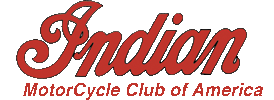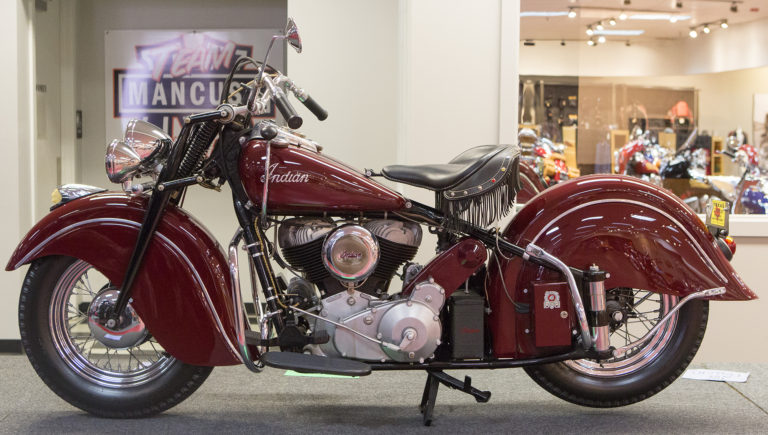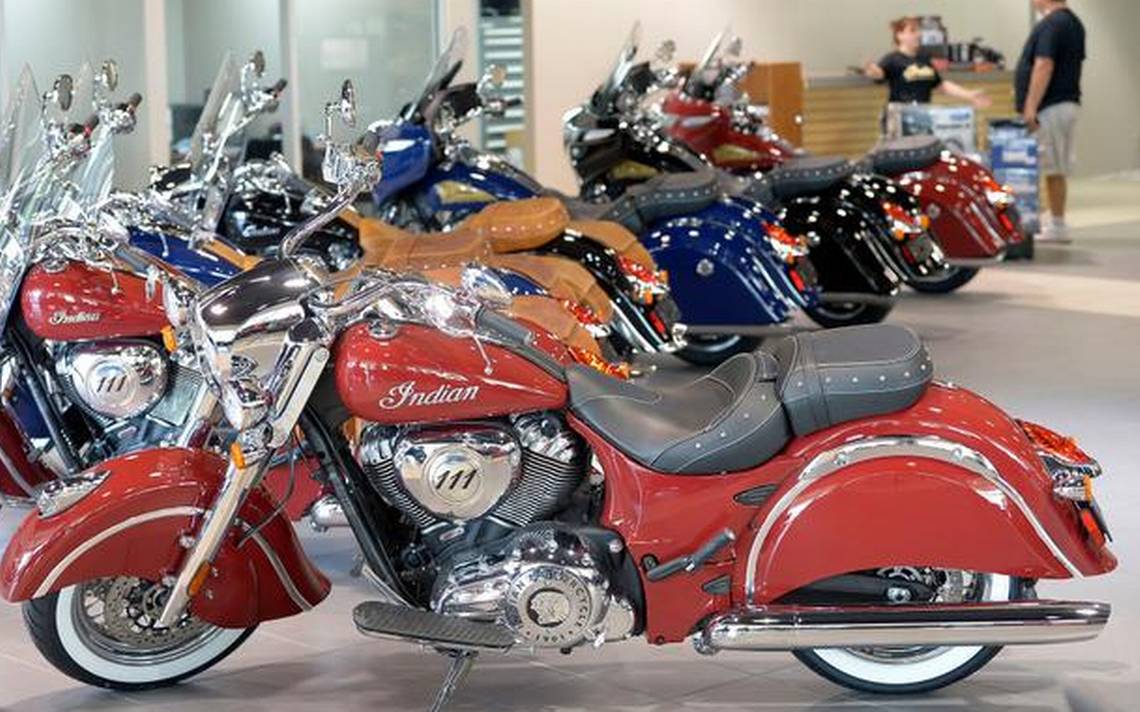When 92-year-old Bobby Hill was a young man he raced Indian motorcycles in Dodge City, Kan., and other tracks across the country, going toe-to-toe with Harley-Davidson bikes in a fierce rivalry.But the Indian motorcycle company, an iconic brand that counted movie stars and racing fanatics among its customers, filed for bankruptcy in 1953 and Hill stopped racing them. Next month, though, Hill and the other two members of what was known as the Indian Wrecking Crew will be honored for their exploits at the AMA Vintage Motorcycle Days in Ohio.They’ll also get to see new Indian Motorcycles that are once again being made and are being featured at the event.“I don’t ride anymore but good luck to them,” said Hill of Columbus, Ohio. “I’m sure they’ll do good.”Related A 1939 ad for four models promised performance. | Wood Museum›‹Photo gallery: Indian Motorcycle brand makes a comebackPhoto gallery: Indian motorcycles – In the beginningThe Indian motorcycle is trying to rev up a comeback and it’s going after the Harley-Davidson hog.Last year, Polaris Industries, with $3.8 billion in annual sales in 2013 mainly from off-road vehicles such as snowmobiles, began assembling the Indian at a plant in Spirit Lake, Iowa.They’re being sold through more than 200 dealerships in the U.S. and other countries. A dealership has opened in Olathe, and has sold six. Channel 5 weather guy Gary Amble bought one.Founded in 1901, the company became the world’s largest motorcycle maker before succumbing to bad luck and poor business decisions. Several efforts to resurrect the brand since its bankruptcy stumbled as well.The new model is a cruiser called the Chief, named after the vintage model, and it comes in three versions that recall the Indian’s halcyon days with flared fenders, teardrop gas tanks and the V twin-cylinder engine the company pioneered.And for the brand’s fans, the housing for the front fender light is shaped like a war bonnet, just as it was decades ago.Those features along with performance helped make the vintage models of the Indian treasured by collectors. A 1946 Indian Chief formerly owned by the late actor Steve McQueen recently sold for $143,750.But nostalgia goes only so far. Before production began, Polaris spent more than a year retooling and preparing to go against Harley-Davidson, which towers over the market for heavy cruisers.“This is not like the previous attempts,” said James Holter, a spokesman and managing editor for the American Motorcyclists Association. “This is a real effort to get Indian back into the business.”Wisconsin-based Harley-Davidson has a huge lead, with combined sales of motorcycles of $5.6 billion in 2013. The company also sells its Street line of motorcycles that are lighter and less expensive along with heavier models and the company’s well-known heavy cruiser.Both the new Indian cruiser and the traditional Harley cruiser go for roughly $19,000 and up. They both have the classic V-twin engine and are built in America.“You now have a choice with an American made motorcycle,” said Craig Keating, the owner of the Olathe dealership which also sells other Polaris vehicles.Harley-Davidson said it always takes it’s competition seriously including the Indian. There are also several other motorcycle companies in various weight classes such as Honda, BMW and Ducati.“We are very excited about our current line-up of products and what we have in development,” said John Mink, a spokesman for the company.Harley-Davidson’s Kansas City plant produces the Street, Dyna, Sportster and V-Rod motorcycles.Polaris’ motorcycle business, which includes the cheaper Victory cycles, in the fourth quarter of last year doubled to $69 million mainly from Indian sales and it expects motorcycle sales to increase 65 percent to 75 percent this year.The new Indian bikes have gotten some good reviews. USA Today said the Indian Chief was a successful modern cruiser that respects the nameplate .Amble, the weatherman and long-time motorcycle enthusiast, waited a long time to buy an Indian bike. He snapped his up soon after the Olathe dealership opened. The bike looks like it rolled out of the 1940s, he said, and the craftsmanship and art of the leather seat and saddlebags are some of the best he’s ever seen on a regularly produced motorcycle model.He plans to give the bike a good workout on a trip to Connecticut.“I should know much more about the bike after I put nearly 3,000 miles on her odometer in the next week,’’ he said in an email.Among Indian collectors, the reaction is mixed.Doug Strange is an expert on vintage Indian motorcycles who owns several, including a 1948 Chief that was once displayed at the Guggenheim Museum. He said if anyone can rescue Indian, it is Polaris with its engineering and financing resources.The company nailed the appearance to resemble the vintage model but he’s disappointed that they are now bigger and heavier.“I’m on the fence,” he said.The image of Indian motorcycles was burnished by owners like James Dean, star of “Rebel Without A Cause.” When the company’s financial problems worsened it tried to reverse its fortunes with advertisements featuring movie stars like Jane Russell and Robert Ryan.The name lived on in the 2005 movie “The World’s Fastest Indian,” which chronicled the story of Burt Munro, who modified a 1920 Indian motorcycle and in 1967 set a world speed record of 222 miles an hour.Indian at its height had 3,000 employees, most working at the company’s “Wigwam,” the name for its Springfield, Mass., factory.The company was co-founded by George Hendee and Oscar Hedstrom, who built a prototype of an electric bicycle to be used as a pacer in bicycle races. Each year brought improvements and by 1913 the company was selling 32,000 motorcycles, a high mark for the company. The Ford Model T competed as cheap transportation cutting into sales.Indian increasingly sold motorcycles for leisure and enthusiasts. In World War I, it temporarily suspended civilian production to provide military motorcycles. That turned out to be a boost for Harley-Davidson in the U.S. market.In World War II, Harley supplied more military motorcycles and emerged the stronger company, said Guy McLain, director of the Wood Museum in Springfield, which has a large Indian motorcycle exhibit and archives.“Both world wars hurt Indian,” he said.Its fate was sealed after World War II when it rushed out with the Indian Arrow model, an advanced design that proved to be poorly engineered and unreliable.“The motorcycle brand with a great reputation was really damaged,” McLain said.The company closed its doors in 1953 and over the decades efforts by other owners to revive the brand relied on imports that did further damage. In 2004, two investors who resurrected the Chris-Craft Boat Co. purchased the rights to Indian and improved the motorcycle. But the motorcycles were expensive and in limited production.In 2011, Polaris added the brand to its business.Left lingering in the volatile history is why the company that started it all more than a century ago still fascinates. The Antique Automobile Club of America Museum in Hershey, Pa. sought to answer that when it described its Indian motorcycle exhibit that opened in March.It said the Indian motorcycle company witnessed both capitalism’s glory and greed, and saw dizzying success and painful failures. But it emerged as a tenacious symbol of America that refuses to be forgotten.“It embodies an ever-changing idea of what America was and continues to be,” according to the museum.To reach Steve Everly, call 816-234-4455 or send email to severly@kcstar.com





